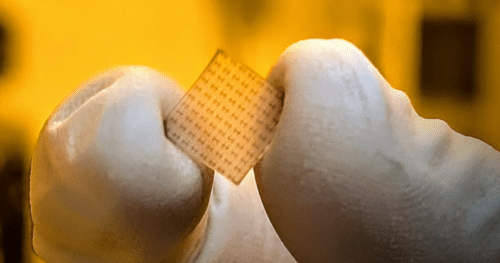
Check out our latest products
Researchers at Stanford Engineering have developed an ultrathin material that outperforms copper in electrical conductivity, potentially paving the way for more energy-efficient nanoelectronics.

As computer chips become increasingly miniaturised, the ultrathin metallic wires responsible for transmitting electrical signals have begun to pose a significant challenge. These wires, often made from copper, struggle to conduct electricity efficiently as they shrink, limiting the performance and energy efficiency of nanoscale electronics. Researchers from Stanford has discovered that niobium phosphide, a topological semimetal, conducts electricity more efficiently than copper in films only a few atoms thick.
These films can be deposited at temperatures low enough to integrate seamlessly with existing chip fabrication processes, making them a promising candidate for future electronics that demand both power and efficiency. The team mentioned that Niobium phosphide can send faster, more efficient signals through ultrathin wires. This could significantly improve the energy efficiency of future chips, particularly in large-scale data centers. As chips become smaller, even modest efficiency improvements can yield substantial energy savings, especially when deployed in vast numbers.

Niobium phosphide’s unique properties arise from its topological nature. Unlike traditional metals like copper, whose conductivity degrades at nanoscales, niobium phosphide improves its conductivity as it thins. The outer surfaces of the material become more conductive as the film shrinks, offering a significant advantage for extremely thin wiring, where copper would fail to perform.
Furthermore, unlike other promising conductors that require high temperatures and precise crystalline structures, niobium phosphide films can be created at just 400°C, a temperature low enough to preserve the integrity of silicon chips. While copper remains the go-to material for thicker wires, niobium phosphide is positioned to revolutionize the thinnest electrical connections in electronics. The team is already exploring alternative topological semimetals to push performance even further, with the goal of integrating these advanced materials into next-generation electronics for both power and efficiency.


![[5G & 2.4G] Indoor/Outdoor Security Camera for Home, Baby/Elder/Dog/Pet Camera with Phone App, Wi-Fi Camera w/Spotlight, Color Night Vision, 2-Way Audio, 24/7, SD/Cloud Storage, Work w/Alexa, 2Pack](https://m.media-amazon.com/images/I/71gzKbvCrrL._AC_SL1500_.jpg)



![[3 Pack] Sport Bands Compatible with Fitbit Charge 5 Bands Women Men, Adjustable Soft Silicone Charge 5 Wristband Strap for Fitbit Charge 5, Large](https://m.media-amazon.com/images/I/61Tqj4Sz2rL._AC_SL1500_.jpg)





